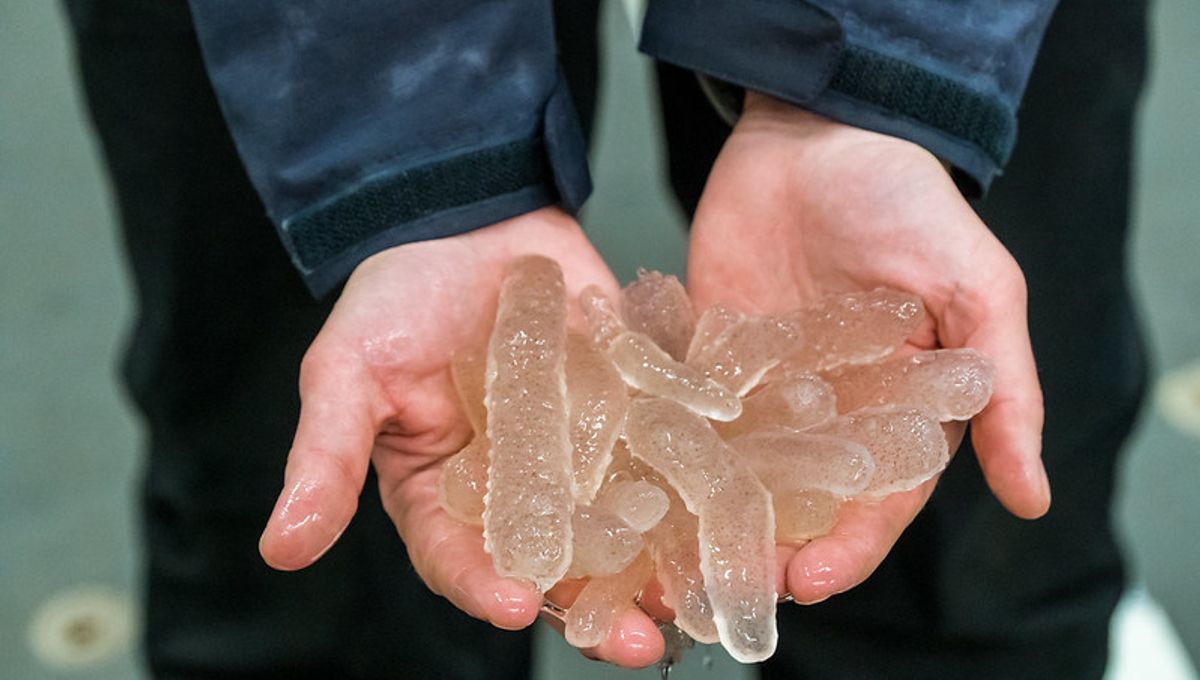
After the invasion of the actually pretty friendly alien pea pods, we’re back with another banger of an aquatic blob – but this one isn’t quite so harmless, according to a new study, thanks to more frequent and intense ocean heatwaves.
These gelatinous sea creatures are called pyrosomes, which are made up of colonies of individuals that typically live in warmer waters. After a series of marine heatwaves in the northeast Pacific Ocean, the population of pyrosomes grew rapidly, with millions of the creatures seen in places along the west coast of the US where they had never been seen before.
However, researchers wanted to understand the ecosystem-wide effects of the marine heatwaves in order to figure out what was happening for all organisms involved and how best to manage the situation. “If you look at single species interactions, you’re likely to miss a lot,” said lead author Dylan Gomes in a statement. “The natural effects of a disturbance are not necessarily going to be straightforward and linear.”
To do this, researchers used food web models, which provide an estimate of the energy flow and feeding relationships between the organisms living in an ecosystem. They applied these models to the northern California Current, comparing the ecosystem before and after the heatwaves occurred.
“Food web models allow us to estimate the cascading effects of marine heatwaves throughout the ecosystem,” Gomes explained. “By tracking all of the many direct and indirect relationships within food webs, these models help us identify potential winners and losers as the ocean reaches new conditions.”
Though it’s not exactly their fault, the results suggest that pyrosomes are absorbing a lot of the available energy – not just because there’s a lot of them feeding on plankton, therefore taking energy away from other plankton feeders, but because they themselves aren’t really eaten by much else in the ecosystem.
“What I found both alarming and fascinating is the extent to which these pyrosomes absorb all of the energy in the system,” said co-author Joshua Stewart. “Because nothing else really eats the pyrosomes, they just become this dead end, and that energy is not available for anyone else in the ecosystem.”
This could end up affecting other members of the ecosystem further up in the food chain, such as fish and marine mammals. The authors suggest that, in turn, this could have an economic impact on fisheries, as well as on efforts to recover and conserve endangered species.
That being said, for the moment, the ecosystem appears to be stable. However, if things do start to change – particularly if marine heatwaves continue to occur – the researchers hope that their findings will help to inform the tools that’ll be used to deal with it.
The study is published in Nature Communications.
Source Link: These Blobby Sea Pickles Are Alive And Thriving – But At What Cost?